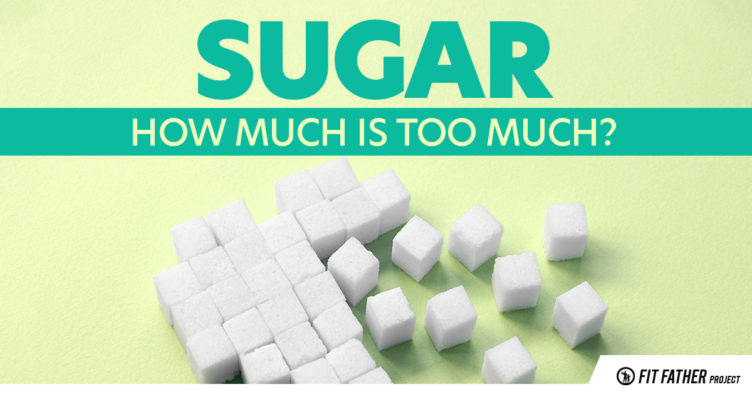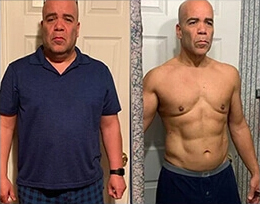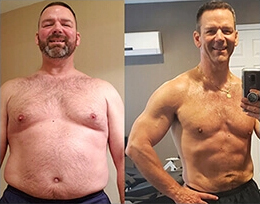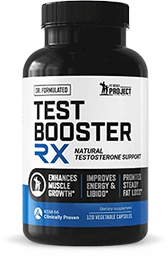Ingesting too much added sugar can erode your physical and mental health. But, how much sugar is too much?
First off, not all sugar is bad.
Natural sugar is present in vegetables, fruits, 100% fruit and vegetable juices, milk, and products containing milk as an ingredient.
Natural sugars found in such foods, as long as they don't contain added sugar too, aren't a risk factor for the health problems linked to added sugar.
Added sugar is something you need to watch out for.
Food companies sometimes add sugar to foods and drinks during the manufacturing process.
Added sugar adds empty calories to foods, without offering any benefits — with the exception of giving you a quick boost of energy.
Artificial sugar is a calorie-free way to add a sweet taste to foods and drinks.
It tricks your brain into thinking you're eating actual sugar.
This, in turn, releases insulin and causes lower blood sugar levels, increasing hunger, irritability, and usually fatigue.
Artificial sugar also increases cravings for real sugar and your risk of diabetes and weight gain.
FDA-approved artificial sugars include sucralose, aspartame, neotame, saccharin, and acesulfame.
Limit them as much as possible in favor of whole foods, monk fruit, natural sugars, low doses of stevia, or erythritol.
Keep reading to learn how to adjust your diet, steer clear from added sugar as much as possible, and make clean eating a habit!
Learn how to stop sugar addiction and what sugar REALLY does to your body!
Why is Too Much Added Sugar a Bad Thing?
The sugar that gets added to drinks, diet drinks, and foods during processing isn't the best for your health for many reasons.
Several studies have found that too much added sugar increases the risk of obesity.
Therefore, it also boosts your chance of type 2 diabetes, blood pressure, high cholesterol, and other chronic health problems.
Research also shows that large amounts of added sugar can cause poor sleep, further increasing your risk of obesity and ongoing diseases.
Too much added sugar increases your chance of developing gum disease, tooth decay, and other oral health problems, as well.
Gum disease is even associated with heart disease, as gum disease may double or triple your risk of a stroke, heart attack, or additional heart problems.
Limit added sugar as much as possible or avoid it in favor of natural sugar and other whole foods.
How Much Sugar is Too Much?
Use general guidelines to determine how much sugar is too much:
On average, people ingest about 17 teaspoons of added sugar daily by eating highly processed, pre-packaged foods.
- 4 grams of sugar = 1 teaspoon of sugar
- 40 grams of sugar = 10 teaspoons of sugar
The Dietary Guidelines for Americans 2025 recommend that kids ages 2 and older limit added sugar to less than 10% of their total calorie requirements.
For example, if you consume 2,000 calories daily, limit calories from added sugar to 200 (50 grams daily or 12 teaspoons of added sugar or less per day).
The American Heart Association (AHA) recommends consuming no more than 36 grams of added sugar per day for men, no more than 24 grams of added sugar daily for women, and less than 24 grams daily for kids and teens ages 2-18.
The AHA also suggests limiting sugary drinks to no more than 8 ounces per week.
Another way you can track added sugar and total sugar in foods is to look at the % daily value (DV) on food labels.
Harvard School of Public Health notes that foods and drinks that provide low amounts of added sugar contain just 5% DV or less of added sugar per serving.
The same source says that foods and drinks containing 20% DV of added sugar (or more) are high in sugar.
So, when you pick pre-packaged foods like oatmeal, breakfast cereals, or protein bars, choose those containing 5% DV of added sugar or less per serving.
Join our 6-Week Program...
You'll Gain Health for Life!In just 6-weeks on our FOUNDATIONS Program, you'll transform your health and body, for the rest of your life!
What Are the Common Names for Added Sugar?
You might see the following common names for added sugar listed on nutrition facts labels:
- Corn sweetener
- Agave nectar
- Brown sugar
- Corn syrup
- High-fructose corn syrup
- Crystalline Fructose
- Cane sugar
- Coconut sugar
- Corn sweetener
- Sugar
- Raw sugar
- Cane crystals
- Molasses
- Maple syrup
- Malt syrup
- Honey
- Fruit juice concentrates
- Dextrose
- Sucrose
- Evaporated cane juice
- Malt sugar
- Invert sugar
You'll notice the number of grams of total sugar, grams of added sugar, and % daily value (DV) for total and added sugars.
So, use food labels to know how much of each you're consuming in a serving of your favorite packaged food items!
Which Foods and Drinks Contain Added Sugar?
Be on the lookout for items that contain hidden added sugar.
Examples of foods and drinks that have varying amounts of added sugar or artificial sweeteners in them include:
Condiments and Sauces
Many unsuspecting sauces and condiments are sources of added sugar, and a lot of people don't realize it.
For example, barbeque sauce, ketchup, honey mustard, spaghetti sauce, teriyaki sauce, honey, and many salad dressings contain added sugar.
Check the ingredient labels on sauces and condiments before you buy them to determine how much added sugar they contain.
Choose lower-sugar options, such as spaghetti sauce without added sugar.
Sugar-Sweetened Drinks
Beverages that often contain added sugar include lemonade, soda, sweet tea, sweetened juice drinks, sports drinks, and sweetened coffee drinks.
In fact, a 12-ounce can of cola contains about 40 grams of added sugar.
Diet drinks, such as diet sodas, aren't much better.
They often contain artificial sugars, which are linked with weight gain, chronic diseases, and obesity.
Some Canned Foods
While not all canned foods contain added sugar, many are sources of sugar, sodium, or both.
Examples of include some canned soups, baked beans, and canned fruits packed in syrup.
Sweets and Baked Goods
Many sweets and baked goods are loaded with refined grains, added sugar, or both.
To maintain exceptional health, limit or avoid desserts like candy bars, ice cream, sweet bread, and cakes as much as you can.
Instead, pick frozen fruit smoothies, dark chocolate, or other healthier alternatives.
Flavored Dairy Drinks
Many flavored dairy drinks, such as strawberry, chocolate, or vanilla milk (or fruit-flavored kefir), are sources of added sugar.
But you shouldn't avoid milk, plant milk, or other dairy products entirely since they're loaded with protein, vitamin D, and calcium.
Just choose unsweetened milk, plant milk, or kefir instead!
Flavored Yogurt
Flavored yogurts often contain added sugar as an ingredient.
The good news is that Greek yogurt, especially plain Greek yogurt, is usually much lower in added sugar than regular yogurt.
It's an excellent option for your health and is loaded with calcium, protein, and probiotics!
Sugar-Sweetened Breakfast Cereals
If you love cereal or oatmeal for breakfast, be on the lookout for added sugar.
Choose breakfast cereals without added sugar, or pick those containing very small amounts (5% DV or less per serving).
Protein Bars and Granola Bars
Granola bars, granola, and many protein bars often contain significant amounts of added sugar, and many aren't the best option for your health.
Pick low-sugar protein bars, “no sugar added” granola bars fortified with protein, or even meat protein bars to steer clear of too much added sugar.
Diet Foods and Drinks
Sugar-free sweet drinks, diet sodas, sugar-free candy, and other diet foods often contain artificial sugars as ingredients that aren't the best option for your health.
Limit or avoid them as much as possible.
Nutritious Alternatives to Added Sugar
Now that you know how much sugar is too much, choose whole, minimally processed foods instead of highly processed items. Examples include:
Healthy Fats
Plant-based fats are some of the best options for your health.
They boost satiety and help lessen cravings for sweets and other high-sugar foods.
Pick nuts, seeds, nut butter, avocados, olive oil, and other plant-based oils.
Fiber-Rich Options
Fiber-rich options to consider adding to nutritious, l0w-added-sugar menus include beans, other legumes, fruits, vegetables, nuts, seeds, and whole grains.
Protein Foods
Nutritious protein foods to choose for healthy meal plans include chicken, turkey, fish, seafood, organic very lean red meat, eggs, tofu, seitan, veggie burgers, and other plant-based meat alternatives.
Protein allows you to feel full after eating less calories. It speeds up your body's metabolism, aids in muscle building, and helps reduce cravings for not-so-healthy foods.
As a busy guy, it’s challenging to stay consistent with healthy eating. That’s why we created SuperFuel… the delicious “all-in-one” nutrition shake for busy guys 40+ to give your body the protein + key nutrients you need for more energy, fat burning, and muscle building.Meet SuperFuel. The Delicious Protein Shake Packed With 40+ Energy-Boosting Vitamins & Superfoods (Designed For Busy Men)
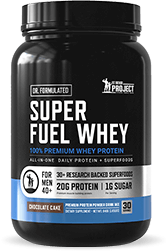
Ways to Plan Low-Sugar Meals
Using the Perfect Plate method is an exceptional way to avoid ingesting too much sugar.
To utilize this method, use the following guidelines:
- Fill one-fourth of each plate of food with whole grains (quinoa, oatmeal, brown rice, etc.) or starchy vegetables (peas, corn, black beans, lentils, sweet potatoes, etc.)
- Fill one-fourth of your plate with protein foods (chicken, fish, seafood, eggs, tofu, etc.)
- Fill half your plate of food with non-starchy vegetables
- Consume 3 servings of dairy foods or calcium-rich plant equivalents daily
- Consume about 2 servings of fruit each day
- Add a healthy fat, such as olive oil, avocados, or nuts, to each meal
- Use sweets and sugary drinks sparingly
Erin Coleman is a registered and licensed dietitian with over 15 years of freelance writing experience. She graduated with her Bachelor of Science degree in nutritional science from the University of Wisconsin-Madison, and completed her dietetic internship at Viterbo University in La Crosse, Wisconsin. Prior to beginning her career in medical content writing, Erin worked as Health Educator for the University of Wisconsin-Madison Department of Internal Medicine. Her published work appears on hundreds of health and fitness websites, and she’s currently working on publishing her first book! Erin is a wife, and a Mom to two beautiful children.Erin Coleman, B.S. Nutritional Science, R.D., L.D.
Writer, Fit Father Project
The FOUNDATIONS Program is created by Dr. Anthony Balduzzi for Men 40+ who want Lifelong Health. In just 6-Weeks following FOUNDATIONS, you'll experience: FOUNDATIONS has transformed 60,000 lives! Are you ready to experience true lasting health & results?Join our 6-Week Doctor Designed Health Program. You'll Gain Foundational Health for the Rest of Life.
*Please know that weight loss results and health changes/improvements vary from individual to individual; you may not achieve similar results. Always consult with your doctor before making health decisions. This is not medical advice – simply very well-researched info on how much sugar is too much.

